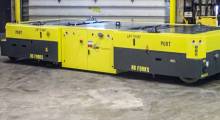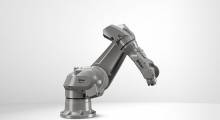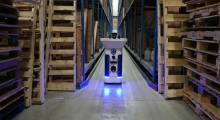Pressing challenges such as labor shortages, inflation, and escalating operational expenses are compelling companies to expedite technological advancements and explore various strategies to upgrade their technology.
According to a new research report from ResearchAndMarkets, the imperative to enhance operational efficiency, handle heavy workloads, and tailor solutions to meet customer demands is driving the development of autonomous technologies within warehouses across North America, with a primary focus on the United States. The report, “North American Industrial Mobile Robots (AGVs and AMRs) Growth Opportunities,” delves into the growth trends of autonomous equipment within the United States industrial sector, with a specific focus on mobile robots, including AGVs (Automated Guided Vehicles) and AMRs (Autonomous Mobile Robots) designed for warehousing applications.
The study assesses the role of contributing technologies, market conditions, and government initiatives in promoting the adoption of mobile robots. Additionally, it scrutinizes the existing infrastructure and forthcoming market dynamics anticipated in the years ahead.
One of the key takeaways from the report: The evolution of autonomous solutions will gain momentum as companies seek to optimize their equipment and fleets. Moreover, the evolving preferences of customers, driven by supply chain disruptions and inflation, have given rise to new business models, including Robotics-as-a-Service (RaaS). The shift towards asset-light operations and the desire to minimize long-term commitments to robot fleets have played pivotal roles in the emergence of these innovative business models.
While AGVs and AMRs find prominent use cases in logistics, delivery, and disinfection, specific subsegments within these categories, such as palletizing and sorting, are expected to take center stage as primary future use cases. The growth of hybrid systems that enable customers to leverage AMRs for multiple operational tasks is also anticipated in the foreseeable future.
The report addresses other key issues, including:
- How many mobile robots (AGVs and AMRs) will be in use by 2030?
- What are the main application categories?
- Who are the top industry participants, and what are their present development and launch activities?
- What are existing and upcoming business models enabling the adoption of warehouse bots?
- What are the use case strengths for various application areas?
- What are the end-user perspectives on automating warehouses and their automation preferences?
The report also includes case studies on Amazon, including a look at how it automates at every stage of fulfillment; on Amazon Robotics (Kiva) and its use of warehouse robots; and on Canvas Technologies’ gameplan for enabling safe co-working spaces for humans and robots.
Check out the report here.
Article topics
Email Sign Up















